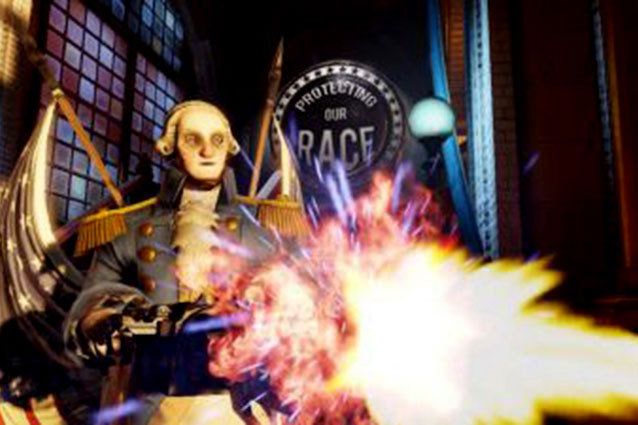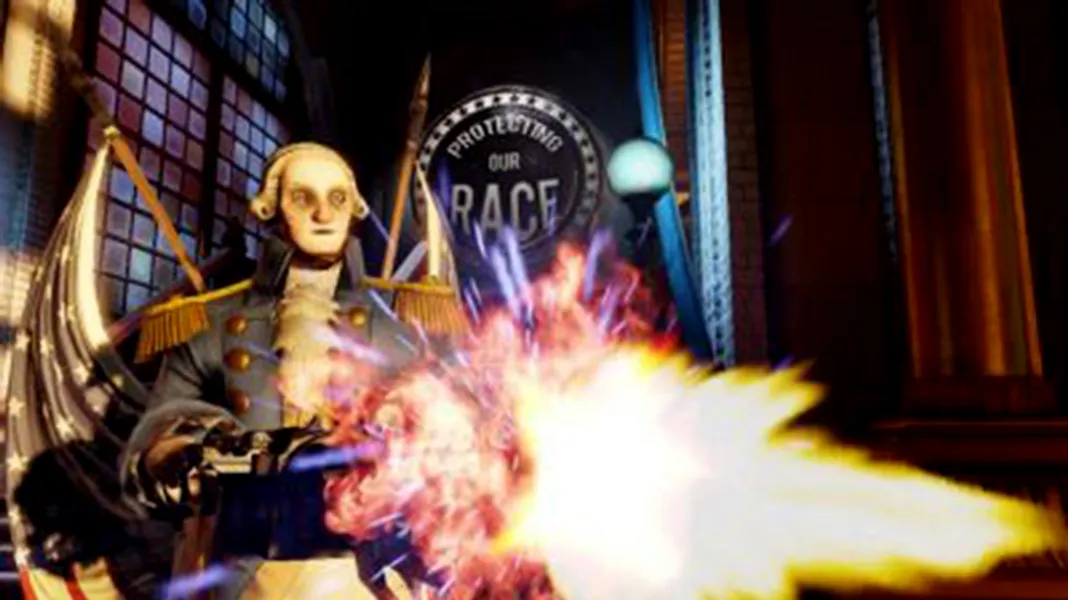
It’s one of the laziest clichés in film criticism: to say that movies, particularly of the blockbuster sort, have become like videogames. It’s meant as a critique of what’s perceived as Hollywood’s emphasis on action and explosions, lack of interest in character development, and slavish devotion to teenage boys and their dollars. It’s also meant as a kneejerk dismissal of videogames. “How could a videogame possibly be a work of art?” and all that. The funny thing is that the reverse of that cliché has become very, very true in recent years: videogames have become like movies.
The Mass Effect trilogy became the most detailed example of cinematic sci-fi worldbuilding since Stars Trek and Wars. The Uncharted series has quickly established itself as the truest spiritual heir to the Indiana Jones movies to emerge from any medium. Red Dead Redemption considered Manifest Destiny with far greater insight than even worthy movie Westerns like True Grit and Django Unchained. But the game franchise that in some ways is the most daringly original is also the one the draws the deepest from its cinematic roots. I’m talking about BioShock. The very first BioShock installment back in 2007 was a heady pastiche of a whole array of movie influences. It also integrated film storytelling directly into the gameplay experience, rather than advance the narrative primarily through cutscene cinematics as so many games have. Now, the latest installment in the series, BioShock Infinite, has been released and it’s a turn-of-the-last-century steampunk fantasia.
Get Thee to the Geek: Why Slasher Cinema Is No Longer Killer
BioShock Infinite is the story of a disgraced Pinkerton agent, Booker DeWitt, who lost his faith in his line of work after participating in the Massacre at Wounded Knee. The year is 1912, and DeWitt’s been given an opportunity to pay old debts, possibly old debts from his Pinkerton days. He’s been tasked to infiltrate a massive floating city called Columbia, after the female personification of America, and rescue a woman named Elizabeth who’s been held there for 12 years against her will. He goes to a missile silo, is launched to Columbia, and begins his journey. In the floating city, he discovers that there’s a brewing conflict between its strict-constructionist Founders and the growing rebel movement, the Vox Populi, who could also be called Occupy Columbia. BioShock Infinite has wide cinematic roots, but there are seven movie influences in particular—or rather, six influences and one reference—that stand out.
The Empire Strikes Back—Ken Levine, the lead designer on BioShock Infinite and co-founder and creative director of Irrational Games, BioShock’s studio, has gone on record as saying that the Star Wars sequel’s Cloud City, the vast metropolis suspended in the sky of gas giant Bespin, was a source of inspiration for Columbia. Like Cloud City, Columbia is basically a giant floating platform upon which the cityscape itself is built. Levine has also said that the Death Star influenced the concept of Columbia because of the city’s formidable weapons systems.
Get Thee to the Geek: Why ‘Clone Wars’ Was ‘Star Wars’ At Its Very Best
Meet Me in St. Louis & Other Turn-of-the-20th-Century Americana—Despite being a floating city, Columbia is still a floating city in 1912. So Levine drew upon films that portrayed a highly idealized view of picket-fenced American life at that time. Films like Vincente Minnelli’s immortal 1944 classic Meet Me in St. Louis, which is like a Technicolor postcard from a bygone age that never was. Or later films The Music Man and Hello, Dolly! The latter film, starring Barbra Streisand and Walter Matthau, is by no means a stranger to sci-fi, having been WALL-E’s favorite movie. So if you combine these front-porch idylls with Cloud City, you’ve got a pretty good idea of what Columbia looks like. Of course that combination also means we’ve got some pretty heavy…
…Steampunk—The retro-futurism aesthetic that imagines contemporary or future technology as powered entirely by steam. It’s the go-to mode in movies, like Guy Ritchie‘s Sherlock Holmes films, of envisioning bygone eras as being more sophisticated than they really were. For the apex of steampunk see Sky Captain and the World of Tomorrow, which, with its airships, including one that practically could be called a floating city, left its mark on BioShock.
B.o.B an Big Boi Talk ‘Army of Two: The Devil’s Disciple’
The Shining & Blue Velvet—Of course, the BioShock series has always had a touch of horror cinema about it. Infinite is going for something a little bit more subtle: to mine an all-American milieu of its inherent eeriness the way that David Lynch did to Lumberton in Blue Velvet or Stanley Kubrick to the Overlook Hotel in The Shining. How do you create terror in environs that are the furthest thing from terrifying? Yet another way Levine has raised the bar this time around.
The Pinkertons—The legendary private security and detection organization was a mainstay in strikebreaking and outlaw-hunting in the late 19th and early 20th centuries, and frequent Western movie villains. You’ll remember their prominent appearance in Butch Cassidy and the Sundance Kid as the ruthless enforcers who track down Butch & Sundance’s Hole in the Wall gang.
Kinetoscopes—Rather than using traditional cutscenes to impart exposition, most of what you need to know about the world of Columbia is learned on the fly. However, crucial intel can be gleaned along the way by stopping to gaze into a kinetoscope. You know a kinetoscope, right? It’s a wooden box with a sprocket apparatus, into which you gaze through a viewfinder to look at a series of flip card images that, when turned, create the illusion of movement. It’s like a mechanical flip book, and is usually considered an early precursor of cinema itself. A kinetoscope works pretty much exactly like a motion picture, except that it’s not projected onto a screen.
Revenge of the Jedi—Okay, this last one is not an influence on the game, since it never even existed in real life. But it is an interesting allusion. After you’ve rescued and partnered with Elizabeth, she can give you the power to open rifts in the space-time continuum to travel to other times and places. One of those places is Paris. The time? 1983. The year we all know Return of the Jedi came out. Except that the movie theater marquee in Paris reads Revenge of the Jedi. That was George Lucas’ original title for his conclusion to the Original Star Wars Trilogy, until he decided that it’s not in the Jedi way to take revenge. Several posters bearing the name Revenge of the Jedi were released, however, in early 1983 before the change to Return of the Jedi was made official. Get thee to eBay to find where you can buy one online.
Do you plan on playing BioShock Infinite? And which of these cinematic influences/shout-outs is your favorite?
Follow Christian Blauvelt on Twitter @Ctblauvelt
[Photo Credit: 2K Games]
You Might Also Like: 15 Oscar-Winning Nude Scenes
15 Oscar-Winning Nude Scenes 10 Insane ‘Star Wars’ Moments You Didn’t Notice
10 Insane ‘Star Wars’ Moments You Didn’t Notice


